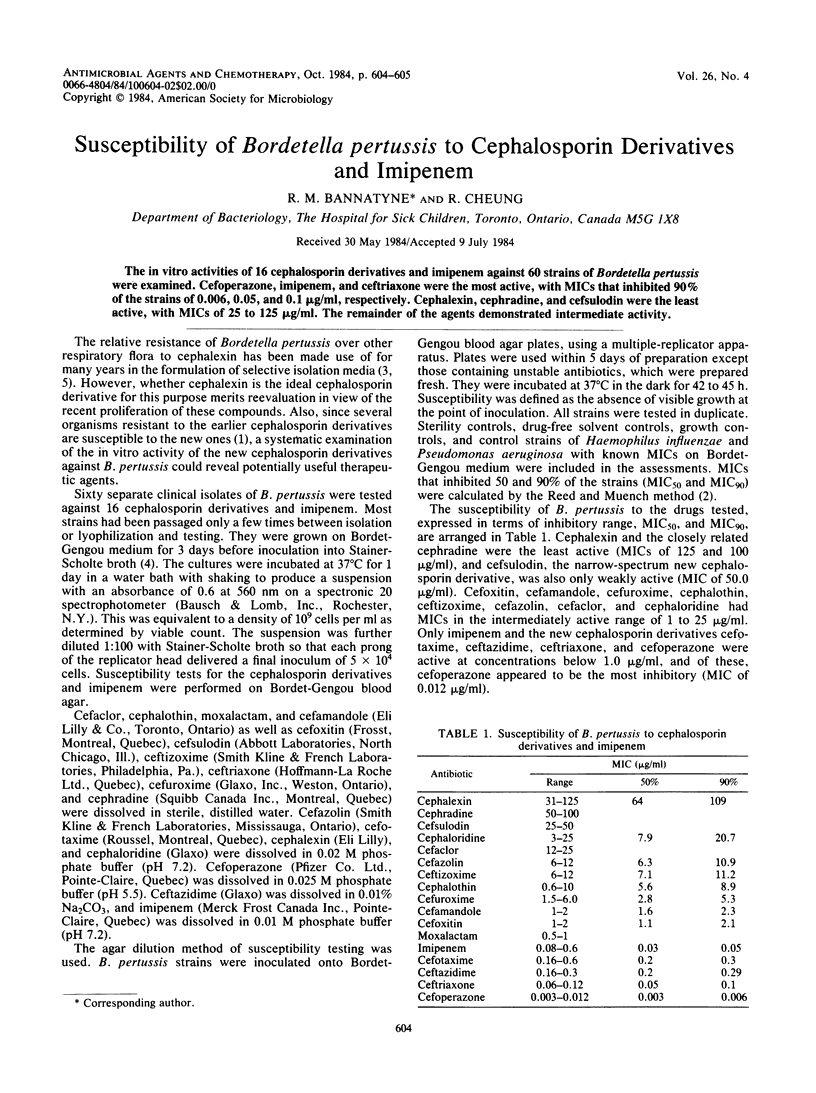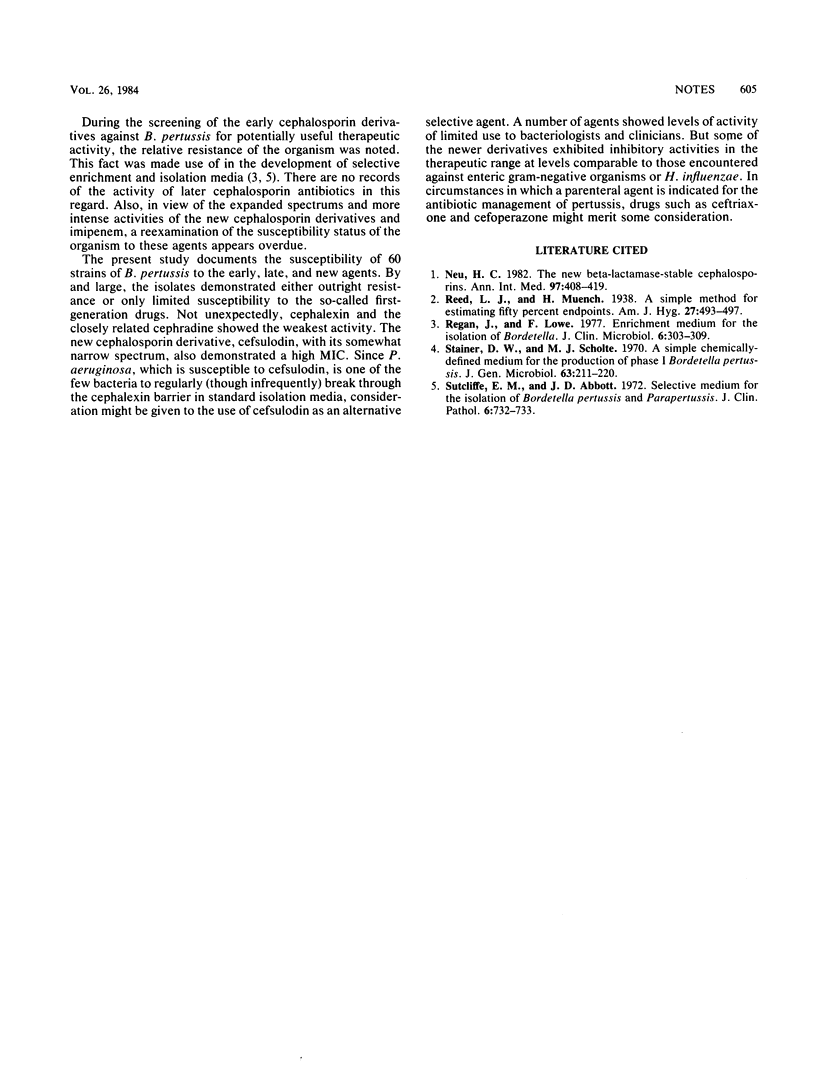Abstract
The in vitro activities of 16 cephalosporin derivatives and imipenem against 60 strains of Bordetella pertussis were examined. Cefoperazone, imipenem, and ceftriaxone were the most active, with MICs that inhibited 90% of the strains of 0.006, 0.05, and 0.1 microgram/ml, respectively. Cephalexin, cephradine, and cefsulodin were the least active, with MICs of 25 to 125 micrograms/ml. The remainder of the agents demonstrated intermediate activity.
Full text
PDF

Selected References
These references are in PubMed. This may not be the complete list of references from this article.
- Neu H. C. The new beta-lactamase-stable cephalosporins. Ann Intern Med. 1982 Sep;97(3):408–419. doi: 10.7326/0003-4819-97-3-408. [DOI] [PubMed] [Google Scholar]
- Regan J., Lowe F. Enrichment medium for the isolation of Bordetella. J Clin Microbiol. 1977 Sep;6(3):303–309. doi: 10.1128/jcm.6.3.303-309.1977. [DOI] [PMC free article] [PubMed] [Google Scholar]
- Stainer D. W., Scholte M. J. A simple chemically defined medium for the production of phase I Bordetella pertussis. J Gen Microbiol. 1970 Oct;63(2):211–220. doi: 10.1099/00221287-63-2-211. [DOI] [PubMed] [Google Scholar]
- Sutcliffe E. M., Abbott J. D. Selective medium for the isolation of bordetella pertussis and parapertussis. J Clin Pathol. 1972 Aug;25(8):732–733. doi: 10.1136/jcp.25.8.732. [DOI] [PMC free article] [PubMed] [Google Scholar]


